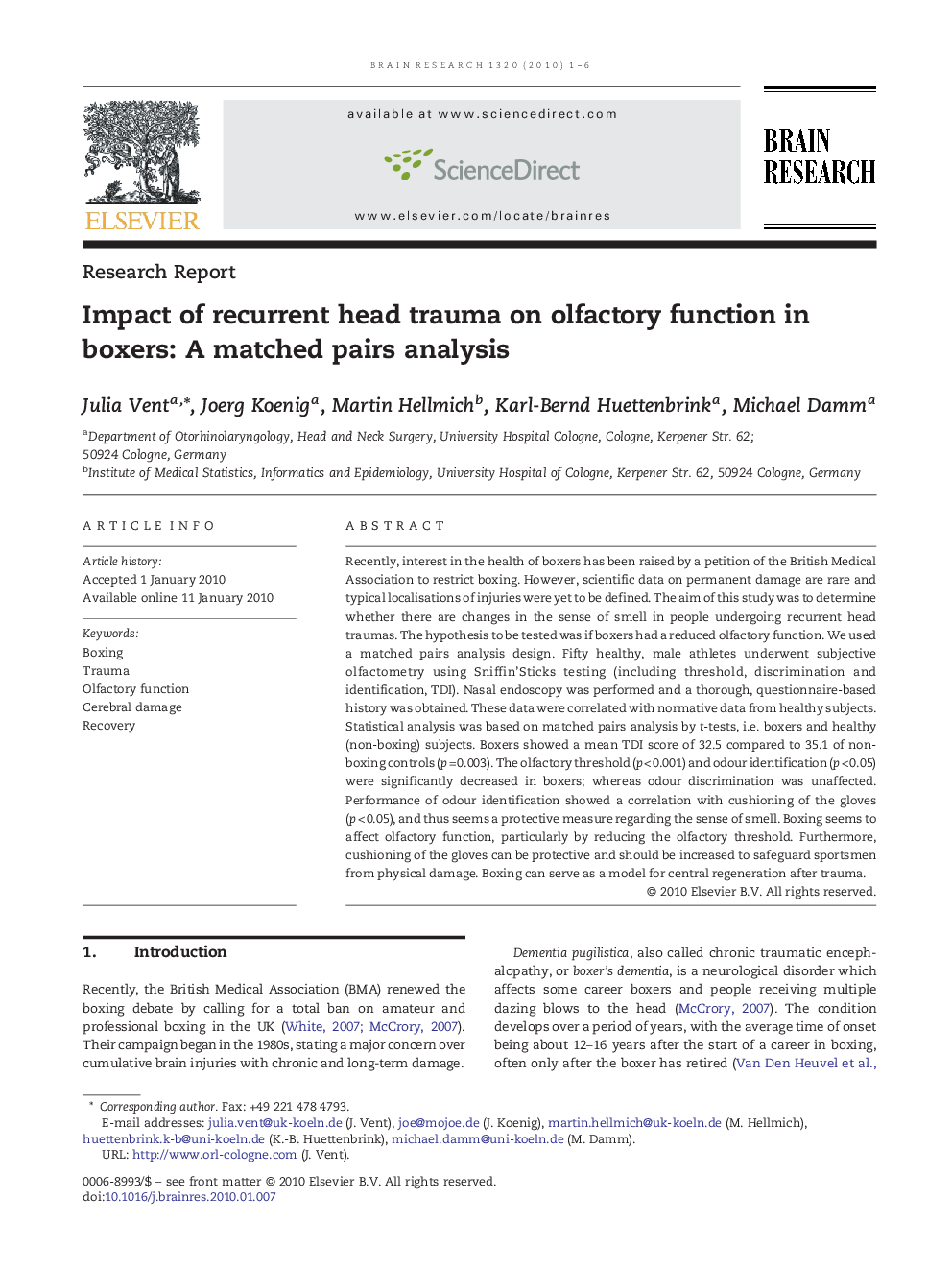| Article ID | Journal | Published Year | Pages | File Type |
|---|---|---|---|---|
| 4327139 | Brain Research | 2010 | 6 Pages |
Recently, interest in the health of boxers has been raised by a petition of the British Medical Association to restrict boxing. However, scientific data on permanent damage are rare and typical localisations of injuries were yet to be defined. The aim of this study was to determine whether there are changes in the sense of smell in people undergoing recurrent head traumas. The hypothesis to be tested was if boxers had a reduced olfactory function. We used a matched pairs analysis design. Fifty healthy, male athletes underwent subjective olfactometry using Sniffin'Sticks testing (including threshold, discrimination and identification, TDI). Nasal endoscopy was performed and a thorough, questionnaire-based history was obtained. These data were correlated with normative data from healthy subjects. Statistical analysis was based on matched pairs analysis by t-tests, i.e. boxers and healthy (non-boxing) subjects. Boxers showed a mean TDI score of 32.5 compared to 35.1 of non-boxing controls (p = 0.003). The olfactory threshold (p < 0.001) and odour identification (p < 0.05) were significantly decreased in boxers; whereas odour discrimination was unaffected. Performance of odour identification showed a correlation with cushioning of the gloves (p < 0.05), and thus seems a protective measure regarding the sense of smell. Boxing seems to affect olfactory function, particularly by reducing the olfactory threshold. Furthermore, cushioning of the gloves can be protective and should be increased to safeguard sportsmen from physical damage. Boxing can serve as a model for central regeneration after trauma.
